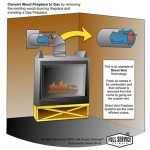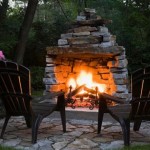Painting A Fireplace Mantel With Chalk Paint
A fireplace mantel serves as a focal point within a room, drawing attention and contributing significantly to the overall aesthetic. When updating or refreshing a living space, the mantel is often a prime candidate for renovation. Chalk paint presents itself as a versatile and accessible option for transforming a fireplace mantel, owing to its ease of application, matte finish, and ability to adhere to various surfaces with minimal preparation. This article details the process of painting a fireplace mantel with chalk paint, covering preparation, application techniques, and considerations for achieving a desirable and durable result.
Chalk paint distinguishes itself from conventional paints through its composition, which typically includes calcium carbonate or a similar chalk-like material. This composition gives the paint its characteristic matte finish and allows it to adhere well to surfaces without requiring extensive sanding or priming. The paint's porous nature also makes it receptive to waxing or sealing, which enhances its durability and provides protection against wear and tear. While referred to as "chalk paint," it should not be confused with chalkboard paint, which is designed to create a surface that can be written on with chalk.
The popularity of chalk paint stems from its versatility. It can be used on a wide range of materials, including wood, metal, and even some plastics. Its forgiving nature allows for the creation of various decorative effects, such as distressing, layering, and color washing. This makes it a suitable choice for both modern and traditional decorating styles. For a fireplace mantel, chalk paint can be used to achieve a range of looks, from a rustic, weathered appearance to a smooth, refined finish.
Before embarking on the painting process, it is crucial to gather the necessary materials. These include chalk paint in the desired color, paint brushes (typically a good quality synthetic brush is recommended), drop cloths or protective sheeting, painter’s tape, cleaning supplies (such as soap and water or a degreaser), a sanding block or sandpaper (medium grit), wax or sealant (optional, but generally recommended for durability), lint-free cloths, and any necessary safety equipment, such as gloves and a dust mask.
Preparation is Paramount: Cleaning and Surface Preparation
Successful painting projects invariably hinge on thorough preparation. The first step involves cleaning the fireplace mantel to remove any dirt, dust, grease, or grime. Accumulated soot, a common byproduct of fireplace use, can interfere with paint adhesion. A solution of mild soap and water is usually sufficient for general cleaning. However, for stubborn grease or soot stains, a specialized degreaser might be required. It is important to allow the mantel to dry completely before proceeding to the next step.
After cleaning, inspect the mantel for any existing imperfections. Cracks, chips, or peeling paint should be addressed before applying chalk paint. Small cracks can be filled with wood filler, while larger areas of damage may require more extensive repairs. Sanding is essential to smooth out any rough surfaces and create a slightly abraded surface for the chalk paint to adhere to. While chalk paint is known for its adhesive properties, sanding improves the bond and minimizes the risk of peeling or chipping later on. Focus sanding on areas with previous paint, varnish or areas that are particularly glossy. A medium-grit sandpaper (around 120-150 grit) is typically adequate for this purpose. After sanding, thoroughly remove any dust with a tack cloth or a damp cloth.
Painter’s tape plays a crucial role in creating clean lines and protecting adjacent surfaces. Apply tape along the edges of the mantel where it meets the wall or fireplace surround. Ensure that the tape is firmly pressed down to prevent paint from seeping underneath. Taking the time to properly tape off the area will save time and effort during the cleanup process and ensure a professional-looking finish.
Application Techniques: Achieving a Flawless Finish
Chalk paint is generally easy to apply, but certain techniques can enhance the final result. Before opening the can, read the manufacturer’s instructions carefully. Some chalk paints benefit from being stirred thoroughly to ensure that the pigments are evenly distributed. Avoid shaking the can, as this can introduce air bubbles into the paint.
Begin by applying a thin, even coat of chalk paint to the mantel. Use a good-quality synthetic brush to minimize brushstrokes. Work in the direction of the wood grain whenever possible. Avoid applying the paint too thickly, as this can lead to drips and uneven drying. Chalk paint typically dries quickly, so it is important to work efficiently. Allow the first coat to dry completely before applying a second coat. Drying times vary depending on the humidity and temperature, but typically range from 30 minutes to a few hours.
After the first coat has dried, inspect the mantel for any imperfections that may require touch-ups. Minor brushstrokes or inconsistencies can be smoothed out with a light sanding using a fine-grit sandpaper (220 grit or higher). Remove any dust before applying the second coat. The second coat should be applied in the same manner as the first, ensuring even coverage and avoiding excessive thickness. Depending on the desired opacity and the color of the mantel, a third coat may be necessary. Allow the final coat to dry completely before proceeding to the next step. The key to achieving a smooth, even finish lies in applying thin, even coats and allowing each coat to dry thoroughly.
For those seeking a distressed or aged look, chalk paint offers a variety of techniques. One common method involves lightly sanding the edges and corners of the mantel after the paint has dried. This reveals the underlying wood or paint color, creating a worn and weathered appearance. Another technique involves applying a layer of dark wax or antiquing glaze over the chalk paint and then wiping away the excess with a lint-free cloth. This accentuates the details and adds depth to the finish. Experiment with different techniques to achieve the desired aesthetic.
Sealing and Protection: Enhancing Durability and Longevity
While chalk paint provides a visually appealing finish, it is relatively porous and susceptible to staining and damage. Sealing the painted surface is essential to enhance its durability and protect it from wear and tear. Wax and sealant are the two primary options for sealing chalk paint. Wax is a traditional choice that provides a soft, matte finish and a degree of water resistance. Sealant, typically a water-based acrylic product, offers greater durability and protection against moisture and stains.
If using wax, apply a thin, even coat of wax to the entire painted surface. Use a wax brush or a lint-free cloth to work the wax into the paint. Allow the wax to sit for a few minutes and then buff it with a clean, lint-free cloth to remove any excess and create a smooth, polished finish. Multiple coats of wax can be applied for added protection. It is important to note that waxed surfaces require occasional re-waxing to maintain their protective qualities.
If using sealant, apply a thin, even coat of sealant to the painted surface. Use a brush or a foam roller to avoid brushstrokes. Water-based sealants typically dry quickly. Allow the first coat to dry completely before applying a second coat. Two to three coats of sealant are generally recommended for optimal protection. Sealant provides a more durable and water-resistant finish than wax, making it a suitable choice for high-traffic areas or surfaces that are prone to spills.
Once the wax or sealant has dried completely, carefully remove the painter’s tape. Use a utility knife to score along the edge of the tape before peeling it off to prevent the paint from chipping. Inspect the finished mantel for any imperfections that may require touch-ups. Address any minor flaws with a small brush and allow the touch-up paint to dry completely.
The newly painted fireplace mantel can be further enhanced with decorative elements. Consider adding candles, vases, artwork, or other decorative objects to complement the new finish and create a cohesive and visually appealing focal point within the room. The choice of decorative elements should reflect the overall style of the space and the desired aesthetic.
Maintaining a chalk-painted fireplace mantel involves regular cleaning with a soft, damp cloth. Avoid using harsh chemicals or abrasive cleaners, as these can damage the finish. Dust the mantel regularly to prevent the buildup of dirt and grime. For waxed surfaces, re-waxing may be necessary periodically to maintain the protective qualities of the wax. With proper care and maintenance, a chalk-painted fireplace mantel can provide years of beauty and enjoyment.

Chalk Paint Fireplace Mantel Vintage Charm Red

Chalk Paint Fireplace Mantel Vintage Charm Red

Diy Fireplace Mantel Makeover Painting With Chalk Paint

Mantel Makeover With Paint

I Chalk Painted Our Mantle

Painted Fireplace Surrounds With Chalk Paint By Annie Sloan Silk Sage Design Studio

Painted Marble Fireplace Surround Two Years Later Simply2moms

Chalk Painted Fireplace Mantel Mantels Paint

Simple Fireplace Upgrade Annie Sloan Chalk Paint East Coast Creative

Chalk Paint Fireplace Mantel Vintage Charm Red
Related Posts








